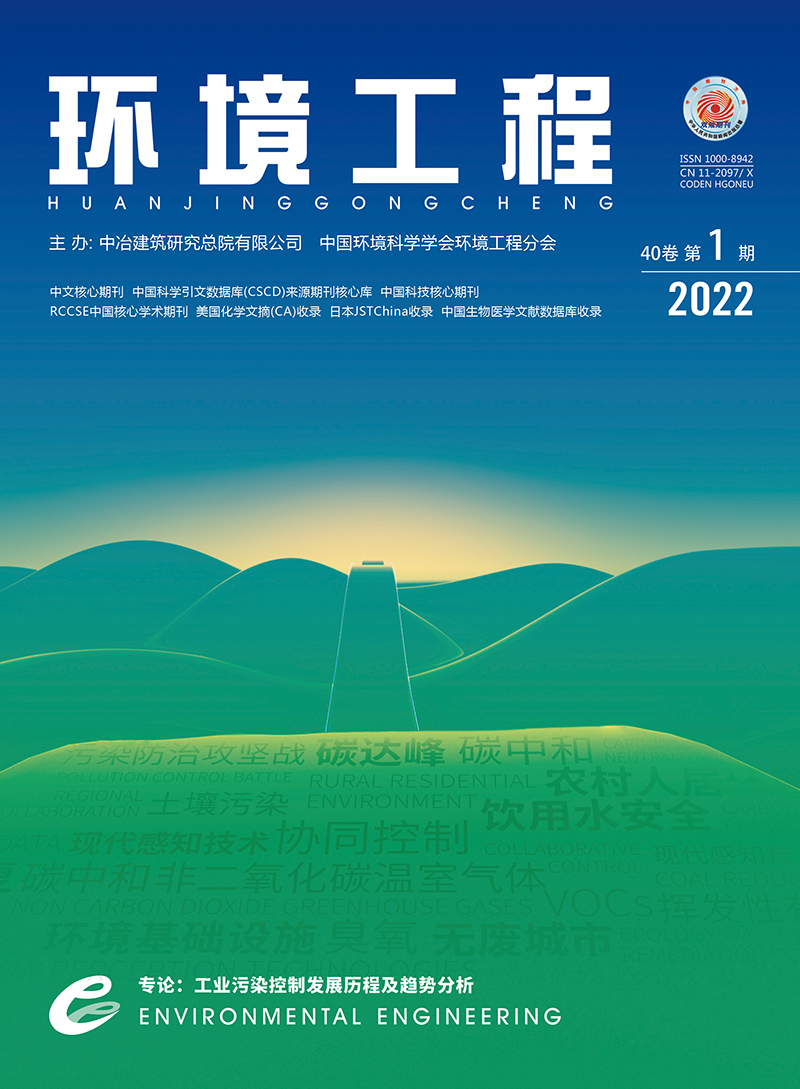| [1] |
LYU X P,GUO H,WANG F,et al.Hazardous volatile organic compounds in ambient air of China[J].Chemosphere,2020,246:125731.
|
| [2] |
ZHANG X M,XUE Z G,LI H,et al.Ambient volatile organic compounds pollution in China[J].Journal of Environmental Sciences,2017,55:69-75.
|
| [3] |
FISHBEIN L.An overview of environmental and toxicological aspects of aromatic hydrocarbons.Ⅰ.Benzene[J].Science of the Total Environment,1984,40 (1):189-218.
|
| [4] |
KHAN H.Short review:benzene’s toxicity:a consolidated short review of human and animal studies[J].Human & Experimental Toxicology,2007,26 (9):677-685.
|
| [5] |
World Health Organization (WHO).International Agency for Research on Cancer (IARC).Some industrial chemicals and dye stuffs.vol 29[R].WHO Regional Publication,European Series World Health Organization,Regional Office for Europe,Copenhagen,1999.
|
| [6] |
United States Environmental Protection Agency (USEPA).Integrated Risk Information System (IRIS).Toxicological review of benzene (non-cancer effects) (EPA/635/R-02/001F)[R].United States Environmental Protection Agency,Washington,DC,2002.
|
| [7] |
European Union (EU).Directive 2008/50/EC of the European Parliament of the Council of 21 May 2008 on ambient air quality and cleaner air for Europe[S].2008.
|
| [8] |
夏芬美,李红,李金娟,等.北京市东北城区夏季环境空气中苯系物的污染特征与健康风险评价[J].生态毒理学报,2014,9 (6):1041-1052.
|
| [9] |
CARTER W P L.Development of ozone reactivity scales for volatile organic compounds[J].Journal of the Air & Waste Management Association,1994,44 (7):881-899.
|
| [10] |
FORSTNER H J L,FLAGAN R C,SEINFELD J H.Secondary organic aerosol from the photo-oxidation of aromatic hydrocarbons:molecular composition[J].Environmental Science & Technology,1997,31 (5):1345-1358.
|
| [11] |
SATO K,TAKAMI A,ISOZAKI T,et al.Mass spectrometric study of secondary organic aerosol formed from the photo-oxidation of aromatic hydrocarbons[J].Atmospheric Environment,2010,44(8):1080-1087.
|
| [12] |
ZENG L W,FAN G J,LYU X P,et al.Atmospheric fate of peroxyacetyl nitrate in suburban Hong Kong and its impact on local ozone pollution[J].Environmental Pollution,2019,252 (Part B):1910-1919.
|
| [13] |
WANG B,SHAO M,LU S H,et al.Variation of ambient non-methane hydrocarbons in Beijing city in summer 2008[J].Atmospheric Chemistry and Physics,2010,10 (13):5911-5923.
|
| [14] |
ZOU Y,DENG X J,ZHU D,et al.Characteristics of 1 year of observational data of VOCs,NOx and O3 at a suburban site in Guangzhou,China[J].Atmospheric Chemistry and Physics,2015,15 (12):6625-6636.
|
| [15] |
王倩,陈长虹,王红丽,等.上海市秋季大气VOCs对二次有机气溶胶的生成贡献及来源研究[J].环境科学,2013,34(2):424-433.
|
| [16] |
DING X,WANG X M,GAO B,et al.Tracer-based estimation of secondary organic carbon in the Pearl River Delta,south China[J].Journal of Geophysical Research:Atmospheres,2012,117 (D5):D05313.
|
| [17] |
WANG S,WU D,WANG X M,et al.Relative contributions of secondary organic aerosol formation from toluene,xylenes,isoprene,and monoterpenes in Hong Kong and Guangzhou in the Pearl River Delta,China:an emission-based box modeling study[J].Journal of Geophysical Research:Atmospheres,2013,118(2):507-519.
|
| [18] |
国家统计局.中国统计年鉴-2019[M].中国统计出版社,2019.
|
| [19] |
CHAN L Y,CHU K W,ZOU S C,et al.Characteristics of non-methane hydrocarbons (NMHCs) in industrial,industrial-urban,and industrial-suburban atmospheres of the Pearl River Delta (PRD) region of south China[J].Journal of Geophysical Research:Atmospheres,2006,111 (D11):D11304.
|
| [20] |
LIU Y,SHAO M,FU L L,et al.Source profiles of volatile organic compounds (VOCs) measured in China:Part Ⅰ[J].Atmospheric Environment,2008,42 (25):6247-6260.
|
| [21] |
TSAI S M,ZHANG J F,SMITH K R,et al.Characterization of non-methane hydrocarbons emitted from various cookstoves Used in China[J].Environmental Science & Technology,2003,37 (13):2869-2877.
|
| [22] |
LI M,ZHANG Q,STREETS D G,et al.Mapping Asian anthropogenic emissions of non-methane volatile organic compounds to multiple chemical mechanisms[J].Atmospheric Chemistry and Physics,2014,14 (11):5617-5638.
|
| [23] |
HAN T T,MA Z Q,XU W Y,et al.Characteristics and source implications of aromatic hydrocarbons at urban and background areas in Beijing,China[J].Science of the Total Environment,2020,707:136083.
|
| [24] |
杨婷,李丹丹,单玄龙,等.北京市典型城区环境空气中苯系物的污染特征、来源分析与健康风险评价[J].生态毒理学报,2017,12 (5):79-97.
|
| [25] |
LIU Y H,WANG H L,JING S G,et al.Characteristics and sources of volatile organic compounds (VOCs) in Shanghai during summer:implications of regional transport[J].Atmospheric Environment,2019,215:116902.
|
| [26] |
李雷,李红,王学中,等.广州市中心城区环境空气中挥发性有机物的污染特征与健康风险评价[J].环境科学,2013,34(12):4558-4564.
|
| [27] |
虞小芳,程鹏,古颖纲,等.广州市夏季VOCs对臭氧及SOA生成潜势的研究[J].中国环境科学,2018,38(3):830-837.
|
| [28] |
WEI W,WANG S X,HAO J M,et al.Trends of chemical speciation profiles of anthropogenic volatile organic compounds emissions in China,2005—2020[J].Frontiers of Environmental Science & Engineering,2014,8:27-41.
|
| [29] |
HUI L R,LIU X G,TAN Q W,et al.VOC characteristics,chemical reactivity and sources in urban Wuhan,central China[J].Atmospheric Environment,2020,224:117340.
|
| [30] |
司雷霆,王浩,李洋,等.太原市夏季大气VOCs污染特征及臭氧生成潜势[J].中国环境科学,2019,39 (9):3655-3662.
|
| [31] |
徐晨曦,陈军辉,韩丽,等.成都市2017年夏季大气VOCs污染特征、臭氧生成潜势及来源分析[J].环境科学研究,2019,32 (4):619-626.
|
| [32] |
刘芮伶,翟崇治,李礼,等.重庆主城区夏秋季挥发性有机物(VOCs)浓度特征及来源研究[J].环境科学学报,2017,37(4):1260-1267.
|
| [33] |
ZHANG Z,ZHANG Y L,WANG X M,et al.Spatiotemporal patterns and source implications of aromatic hydrocarbons at six rural sites across China’s developed coastal regions[J].Journal of Geophysical Research:Atmospheres,2016,121 (11):6669-6687.
|
| [34] |
侯捷,曲艳慧,宁大亮,等.我国居民暴露参数特征及其对风险评估的影响[J].环境科学与技术,2014,37 (8):179-187.
|
| [35] |
HUANG Z H,ZHANG Y L,YAN Q,et al.Decreased human respiratory absorption factors of aromatic hydrocarbons at lower exposure levels:the dual effect in reducing ambient air toxics[J].Environmental Science & Technology Letters,2017,4:463-469.
|
| [36] |
尤翔宇,罗达通,刘湛,等.长株潭城市群人为源VOCs排放清单及其对环境的影响[J].环境科学,2017,38(2):461-468.
|
| [37] |
ZHANG J G,WANGY S,WU F K,et al.Non-methane hydrocarbon measurements at a suburban site in Changsha,China[J].Science of the Total Environment,2009,408 (2):312-317.
|
| [38] |
黄海梅,戴春皓,王章玮,等.长沙市大气挥发性有机物的组成与来源[J].环境化学,2019,38 (3):539-547.
|
| [39] |
ZHENG H,KONG S F,XING X L,et al.Monitoring of volatile organic compounds (VOCs) from an oil and gas station in northwest China for 1 year[J].Atmospheric Chemistry and Physics,2018,18(7):4567-4595.
|
| [40] |
ZHANG Y L,WANG X M,BARLETTA B,et al.Source attributions of hazardous aromatic hydrocarbons in urban,suburban and rural areas in the Pearl River Delta (PRD) region[J].Journal of Hazardous Materials,2013,250/251:403-411.
|
| [41] |
WANG X M,SHENG G Y,FU J M,et al.Urban roadside aromatic hydrocarbons in three cities of the Pearl River Delta,People’s Republic of China[J].Atmospheric Environment,2002,36 (33):5141-5148.
|
| [42] |
United States Environmental Protection Agency (USEPA).Risk assessment guidance for superfund volume Ⅰ:human health evaluation manual (Part F,supplemental guidance for inhalation risk assessment):Final [EPA Report].(EPA/540/-R-070/002)[R].http://www.epa.gov/oswer/riskassessment/ragsf/index.htm.2009.
|
| [43] |
南淑清,张霖琳,张丹,等.郑州市环境空气中VOCs的污染特征及健康风险评价[J].生态环境学报,2014,23 (9):1438-1444.
|
| [44] |
李友平,唐娅,范忠雨,等.成都市大气环境VOCs污染特征及其健康风险评价[J].环境科学,2018,39 (2):576-584.
|
| [45] |
张平.杭州市空气中苯系物的污染特征、来源及健康风险[D].杭州:浙江大学,2007.
|
| [46] |
管贤贤,齐安安,雷春妮,等.兰州市大气苯系物的化学活性特征与健康风险评价[J].环境科学学报,2020,40 (2):459-468.
|


 Login
Login Register
Register E-alert
E-alert






 DownLoad:
DownLoad: